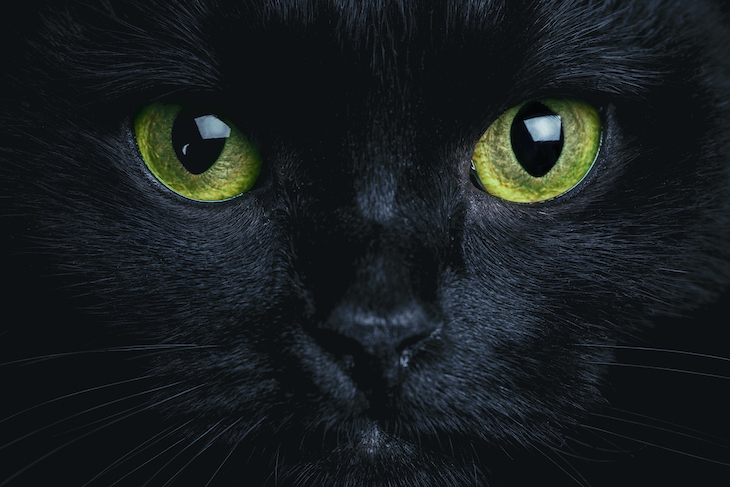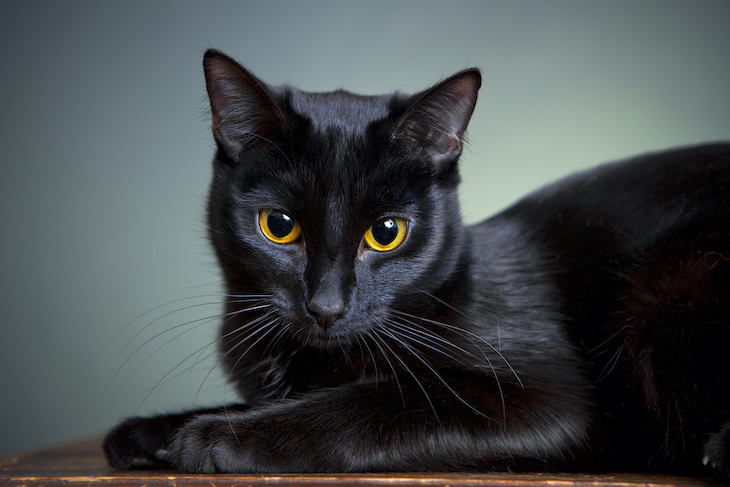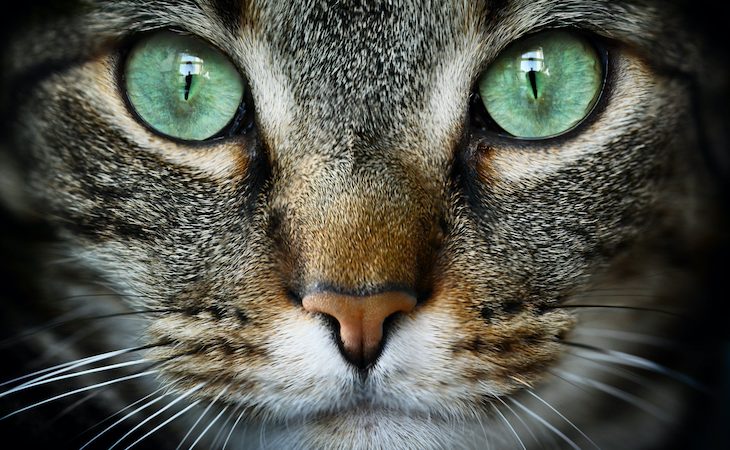Cats’ eyes are both mysterious and fascinating, from their incredible glow to their piercing stares. But did you know that cats have difficulty seeing some colors? And do you know why they make such good nighttime hunters?
We look through the eyes of our feline friends to find out more about cats’ incredible eyesight.
Cats’ eyes: more powerful than human eyes
It’s interesting to learn that the clearest range of vision for a cat is from about 10cm-80cm. Any further or closer and the world becomes a bit of a blur. You may think this means cats have poorer eyesight than we do, but it’s not just about clarity that makes vision so exceptional.
Most of us have heard of the retina – the inner lining of the back of the eyeball that transmits light messages to the brain. The retina is largely made up of cells called photoreceptors. These cells fall into two categories:
- Rods: help us to see in low light and detect movement
- Cones: help us to see in daylight, including distinguishing colors and shades
It’s no surprise then that cats have more rods than humans – 200 million to our 120 million – giving them their astute night vision and the ability to detect movement that would simply pass us without detection.
Luminosity
Additionally, have you noticed how cats’ eyes become almost luminous in the dark? They appear this way thanks to a reflective layer that sits behind the retina, which increases sensitivity to light. This in turn acts like a mirror to help improve night vision. This surface is made up of millions of cells called tapetum lucidum and makes objects appear up to six times more luminous – the same thing that makes their eyes appear to glow in the dark, sometimes even in the living room with the right lighting conditions. Some small mammals don’t have this reflective surface and therefore become much more vulnerable to prey at night.
Cats’ eyes are also positioned similarly to human eyes (i.e. close together and forward facing). However, their field of vision is greater than our own – cats are able to see 200° around them compared to our 135° horizontal range and 180° vertical range. Their peripheral vision is also stronger than our own. This ability to see more of their surroundings, coupled with their astute night vision, means cats have an incredible ability to detect movement from either prey and/or enemies in a way that we simply can’t.

Cats and how they see color
For many centuries, it was believed that cats could only see in black and white. As scientific research progressed, numerous studies began to produce results that showed otherwise.
Whilst these research findings have produced varying findings, the general consensus amongst scientists is that cats do in fact see color – just in different ways to humans.
According to some researchers, the way cats see color can be likened to that of a color-blind human. Others suggest that cats mainly see colors on the blue-green scale, and have difficulty determining different reds, pinks and oranges, as well as various shades of color.
Cats might have more rod cells than humans, but we have more cone cells. As we need light to distinguish between colors and their shades, this helps to explain why cats see color in different, and less clear ways to us.
Preditor or prey?
Like us, cats’ pupils change depending on the lighting around them.
You might have noticed that your cat’s pupils are elongated much like a leaf. When exposed to light, a cat’s pupils will form a thin vertical line. Conversely, pupils of some other animals form a thin horizontal line. So why are they vertically shaped for cats?
According to research published in peer-reviewed scientific journal Science Advances, there is a clear link between the shape of an animal’s pupils to that of its lifestyle. Ambush predators like cats require precision in their ability to judge distances. Vertically elongated pupils allow the animal to do this while keeping their head still to avoid detectable movement. They also allow for better visibility in low light meaning they can strike (or ambush) from a relatively close range.
It is interesting to note that prey animals feature horizontally elongated pupils.
Mood: seeing the signs
Like most creatures, cats’ eyes change depending on their mood or concentration levels, especially when hunting.
If you’re keen to understand more about your own cat’s mood, behavior, or even intelligence, pay close attention to their eyes (in addition to body language signals). You may just notice a thing or two!
For example, if you notice your cat’s pupils contract suddenly, they may be displeased or angry. This might be accompanied by a low, short meow, straightened fur, and/or ears pushed back. These signs can also be indicative of the concentration needed when hunting – or playing various games with your cat.
If your cat’s pupils appear dilated and their ears are pushed back, this may be a sign of alertness, protection or fear. Loud or strange noises can trigger such a response.
And because we all love a happy cat, if your feline friend slowly blinks their eyes at you, it’s more than likely that they are relaxed and happy.


